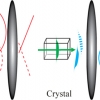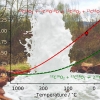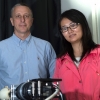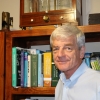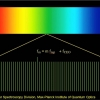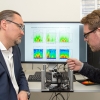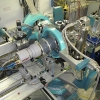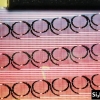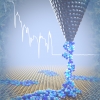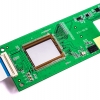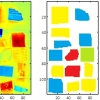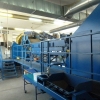Spectroscopy News
Pages
Verdel Instruments Ltd, a spin-out company of the University of Warwick, UK, has developed new two-dimensional mass spectrometry technology and has raised seed investment.
Danish researchers have developed a high-resolution imaging method that can capture mid-infrared spectral images on the order of milliseconds.
X-ray imaging reveal an extinct mouse had brown to reddish fur on its back and sides and had a tiny white tummy.
For the first time it is possible to measure, simultaneously and with extreme precision, four rare molecular variants of carbon dioxide (CO2) using a novel laser spectrometer.
Researchers at Rice University have developed a new compact, fibre-based imaging spectrometer for remote sensing that can capture 30,000 sampling points each containing more than 60 wavelengths.
Hiden Analytical have opened a new company, Hiden Analytical Europe GmbH.
The winner of the 2019 Tomas Hirschfeld Award is José Manuel Amigo Rubio. José obtained his PhD (Cum Laude) in Chemistry from the Autonomous University of Barcelona, Spain. Since 2007, he has been employed at the Department of Food Science of the University of Copenhagen, Denmark, and also as Guest Professor of the Federal University of Pernambuco, Brazil, since 2017. José’s research interests include NIR hyperspectral and multispectral image analysis in different research fields including food production, pharmaceutical research, forensic sciences.
The ABS Trust is seeking applications for the Gordon F. Kirkbright bursary award and the new Edward Steers bursary, both open to early career scientists.
A review reports on developments and prospects in the field of atomic and molecular broadband spectroscopy with frequency combs.
While spectroscopic measurements are normally averaged over myriad molecules, a new method developed by researchers at the Technical University of Munich provides precise information about the interaction of individual molecules with their environment.
2D laser-induced breakdown spectroscopy imaging of shell growth rings is revealing previously hidden data of marine climate change.
A small group of plants known as “resurrection plants” can survive months or even years without water. NIR spectroscopy and aquaphotomics have made a significant step forward in understanding how they do it.
The XMaS beamline at the European Synchrotron Radiation Facility is to undergo a major upgrade over the next 18 months.
Researchers in Switzerland and Russia have developed a miniature frequency comb (1 cm3) that can be mass produced.
Physicists from the University of Basel have developed a new method to examine the elasticity and binding properties of DNA molecules on a surface at extremely low temperatures. With a combination of cryo-force spectroscopy and computer simulations, they were able to show that DNA molecules behave like a chain of small coil springs.
imec have developed an on-chip solution for Raman spectroscopy that could be used to manufacture high-performance, handheld Raman devices; perhaps even in smartphones.
Plastics recycling is complicated by the need to recycle similar plastics together. The presence of flame retardants in plastics also needs to be identified, and NIR hyperspectral imaging can do this.
A new sensor fusion technique based on X-ray and 3D imaging promises improvements to the 3D modelling of mineral resources and more efficient sorting of precious metals.
When assessing a burn patient, doctors use factors such as the depth and size of the burn, as well as the time required for re-epithelialisation. Another, possibly more accurate way to classify burn severity has been developed through analysing the proteome of blister fluid by mass spectrometry.


